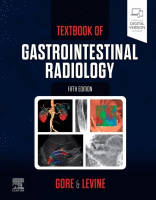Physical Address
304 North Cardinal St.
Dorchester Center, MA 02124

Gastric or duodenal ulcers (peptic ulcers) are thought to occur in about 10% of adults in the West. Peptic ulcers are important not only because of the frequent occurrence of pain or other symptoms but also because of the morbidity…

General Principles Radiologic evaluation of the postoperative esophagus requires an understanding of the operative procedures and normal postoperative findings. Radiographic studies are performed in these patients for three general purposes: (1) to define the postoperative anatomy and establish a baseline;…

Radiographic Technique The gastric cardia is notoriously difficult to evaluate on single-contrast barium studies because the overlying rib cage prevents manual compression of the gastric fundus. If the fundus is not adequately distended, gastric folds may obscure surface detail. If…

Mallory-Weiss Tear PATHOGENESIS A Mallory-Weiss tear is a linear mucosal laceration at or near the cardia caused by a sudden, rapid increase in intraesophageal pressure due to violent retching or vomiting after an alcoholic binge or protracted vomiting for any…

Metastases SITES OF ORIGIN Esophageal metastases are found at autopsy in less than 5% of patients dying of cancer. Carcinoma of the gastric cardia or fundus often invades the distal esophagus, accounting for about 50% of these metastases. Less commonly,…

Esophageal carcinoma comprises less than 10% of all gastrointestinal (GI) tract cancers. Nevertheless, it is a deadly disease, with an overall 5-year survival rate of only about 15%. At one time, most esophageal cancers were thought to be squamous cell…

Benign tumors of the esophagus constitute only about 20% of all esophageal neoplasms. Most are small, asymptomatic lesions, but these tumors may occasionally cause dysphagia or other symptoms, necessitating endoscopic or surgical removal. Depending on their site of origin in…

Drug-Induced Esophagitis Since its original description in 1970, drug-induced esophagitis has been recognized as an increasingly common condition in today’s pill-oriented society. The most frequent causes include tetracycline, doxycycline, potassium chloride, quinidine, nonsteroidal anti-inflammatory drugs (NSAIDs), and alendronate. Because of…

Because of greater survival of immunocompromised patients, infectious esophagitis has become an increasingly common problem in modern medical practice. Candida albicans is the usual offending organism, but herpes simplex virus and cytomegalovirus (CMV) have also been recognized as opportunistic esophageal…

Reflux Esophagitis PATHOGENESIS Gastroesophageal reflux disease (GERD) is the most common inflammatory disease involving the esophagus, with a prevalence of 10% to 20% in the West. , It is a multifactorial process related to the frequency and duration of reflux…